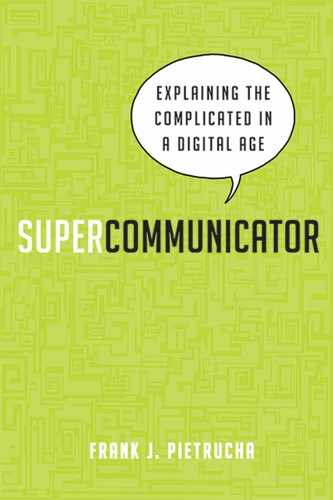But Don't Oversimplify
Early in my research I had the pleasure of interviewing Vint Cerf, one of the “fathers of the Internet.”9 I wanted to see how this legendary techie would explain his creation: TCP/IP technology or, in layman's terms, that which makes the Internet work.
Cerf offered me a line he borrowed from another brilliant innovator of the twentieth century, Albert Einstein. He looked me straight in the eye and told me that the key to communicating complicated topics is simplicity—but with a big caveat. “Everything should be made as simple as possible, but not simpler,” he uttered.
What came next was a walk through the history of the Internet. Cerf proceeded to exemplify his lesson on “simplify, but don't oversimplify.” He discussed early efforts to build the Internet by the U.S. government in the 1960s, then continued onto the 1970s when he started working with Bob Kahn at the U.S. Department of Defense Advanced Research Projects Agency (DARPA). It was there that Cerf and Kahn's team determined how the Internet data should get formatted, addressed, transmitted, routed, and received. He pushed onward to discuss the Internet's commercialization and his work at former telecommunications giant MCI. We talked about technology and policy issues as well. I was getting a crash course in the Internet from the master himself.
As he was talking, I was thinking, “How many times has he explained how the Internet works?” Google's Chief Internet Evangelist, Cerf has perfected his lesson over four decades. Practice certainly helps. By explaining his message over and over again he can gauge just how much complexity he can deliver without alienating people. Cerf knows he can't dumb down his explanation too much; what he wants to convey shouldn't be reduced to superficial banter.
DON'T INSULT YOUR AUDIENCE!
Some audiences try to comprehend some topics that may be challenging and brace themselves accordingly. They turn on their hyperfocus capabilities. They are willing to meet you halfway to try to comprehend the complicated. Don't oversimplify when your audience needs substantial content. Too often communicators are so concerned about scaring people off that they reduce their presentations and papers into meaningless fluff. This does no one any good. You may be trying to help your audience, but in actuality you may be accused of pandering to them. Assuming an audience doesn't have the capacity to learn something technical belittles them and makes you come across as arrogant. Show respect for your audience and don't insult them. Clarify complicated topics, but don't simplify meaningful information that's important for them to learn.
Knowing what material to include and what to leave out is critical to explaining anything. There are no hard and fast rules to follow regarding what should be presented to your audience and what should be tossed into the trash. Finding the right formula—the perfect balance of “simple enough, but not too simple” content—is an art form in itself.
Our discussion of simplicity is about removing barriers that might otherwise prevent audiences from gaining access to information. We put up fences in our communication efforts without realizing it. Some extraneous content here, too much jargon there…it all adds up to preventing access for nonspecialists. Striving for simplicity means cutting through all the noise to distill messages to their core; let's remove roadblocks that keep audiences from comprehension.
Don't Let “Information Smog” Bog You Down
How are we going to take a break from the “information smog”10 we breathe every day? Paul Laudicina, the author of Beating the Global Odds, suggests we “seek out tools and trends in the modern context that enhance simplicity, sustainability, and self-fulfillment. Avoid, eliminate, or minimize those that do not.” The global chairman of consulting firm A.T. Kearney says we need to be clear about our strategic intent and then adopt the “products, processes, and systems that support that strategy.”11

